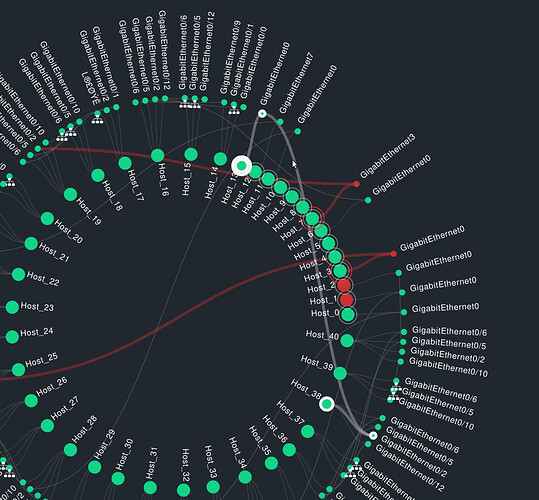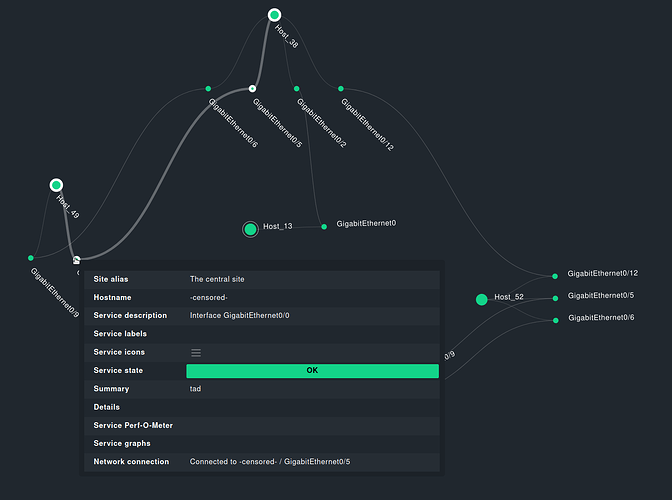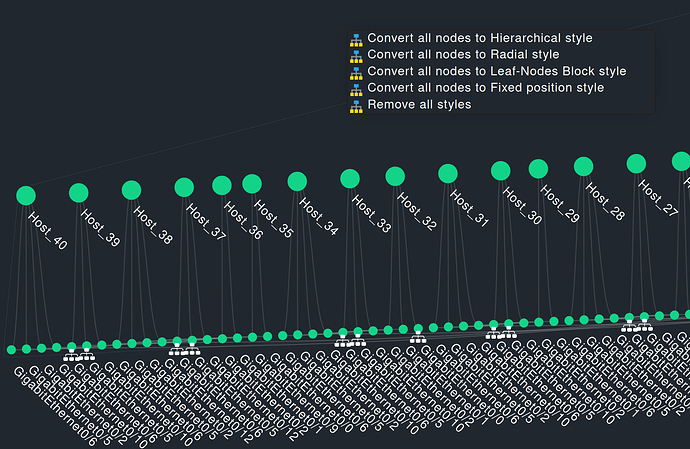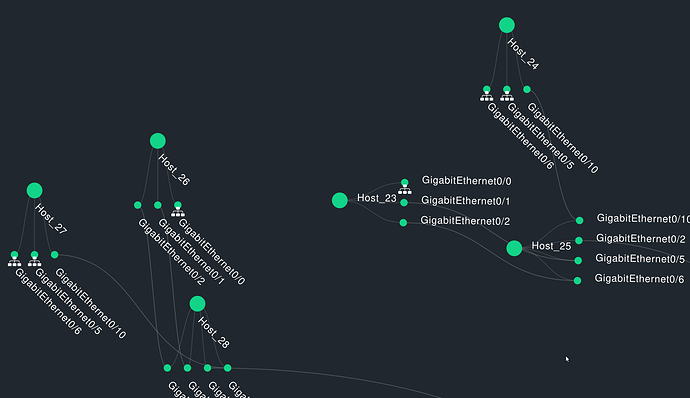Hello all,
at our last conference we already mentioned the following feature and said that we would “soon” offer it as MKP for version 2.2.
I finally had the time to do some additional polishing and make it MKP-ready.
Note that this feature is still under development and will most likely change over time.
I plan to put in additional work at the end of the year. Until then, I welcome feedback in this thread!
Network layer visualization
Purpose
Display network layer2 connections between hosts and interfaces.
How is this mesh computed?
First, some start host(s) must be specified. This is done via the filter form, which is also used by the views.
Starting from these hosts, the topology mesh depth filter is used, which tells the algorithm how many hops from the starting nodes the mesh is to be extended.
Where does the information of the connections come from?
Its up to you to provide this information via a json file - and it will be in the foreseeable future.
Our first protoype used lldp data from switches to generate a file with the following format/content
json-data format:
{
'HostA': {'connections': {'GigabitEthernet0/1': ['HostB', 'GigabitEthernet0/5', 'lldp'],
'GigabitEthernet0/2': ['HostC', 'GigabitEthernet0/6', 'lldp']},
'interfaces': ['GigabitEthernet0/1', 'GigabitEthernet0/2']},
'HostB': {'connections': {'GigabitEthernet0/5': ['HostA', 'GigabitEthernet0/1', 'lldp'],
'GigabitEthernet0/2': ['HostF', 'GigabitEthernet0/6', 'lldp']},
'interfaces': ['GigabitEthernet0/5', 'GigabitEthernet0/2']},
....
}
A dictionary of host names with their respective interfaces and connections to foreign hosts/interfaces.
Further details can be found in the MKP description.
If you can not provide the data mentioned above, the network layer visualization will not work at all.
Once everything is setup correctly the following features are available
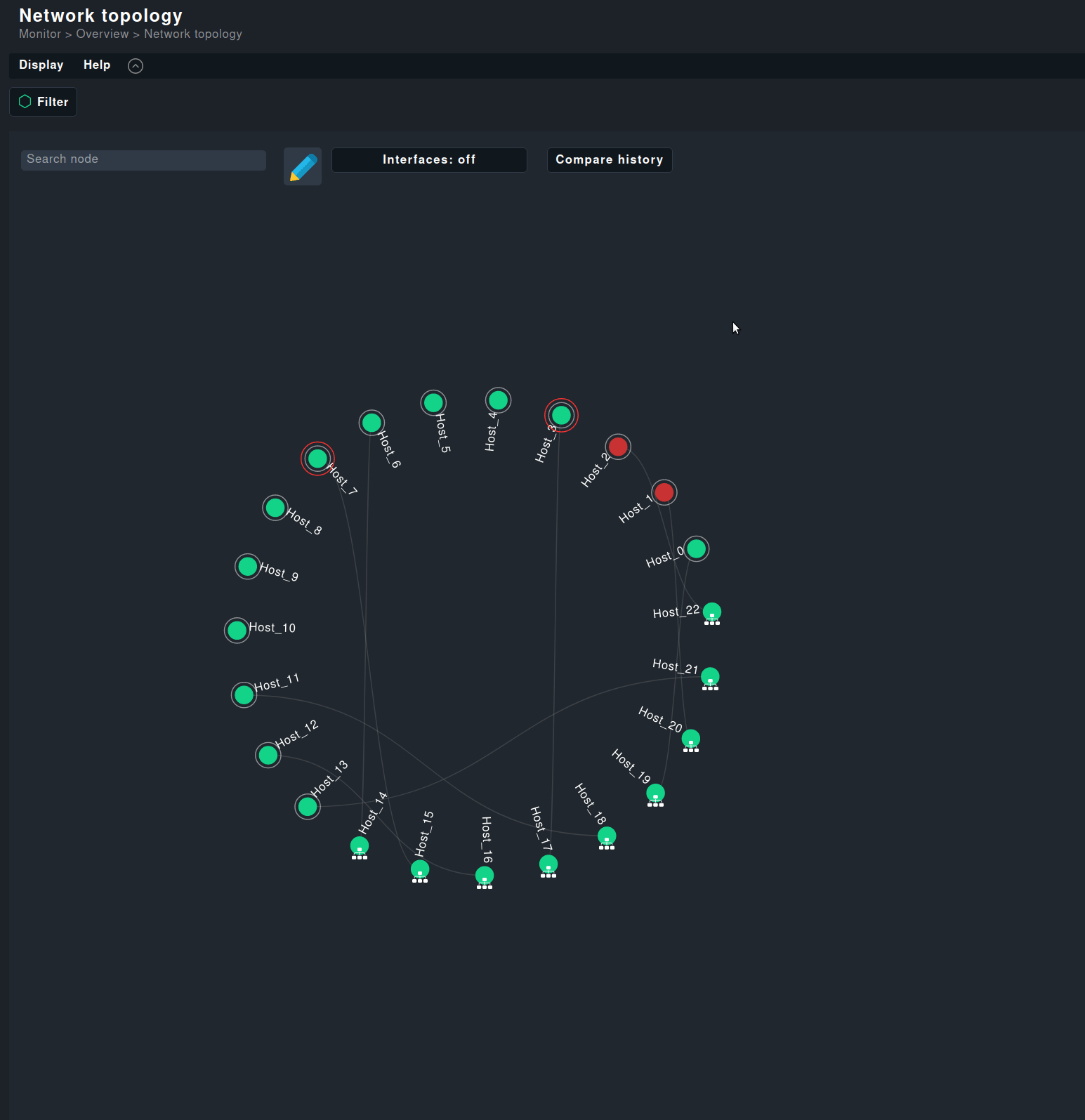
You can switch between different display modes.
- Show only hosts
- Show hosts and interfaces with problems
- Show all hosts and interfaces
If you hover over an interface or a connection line, all involved elements are highlighted.
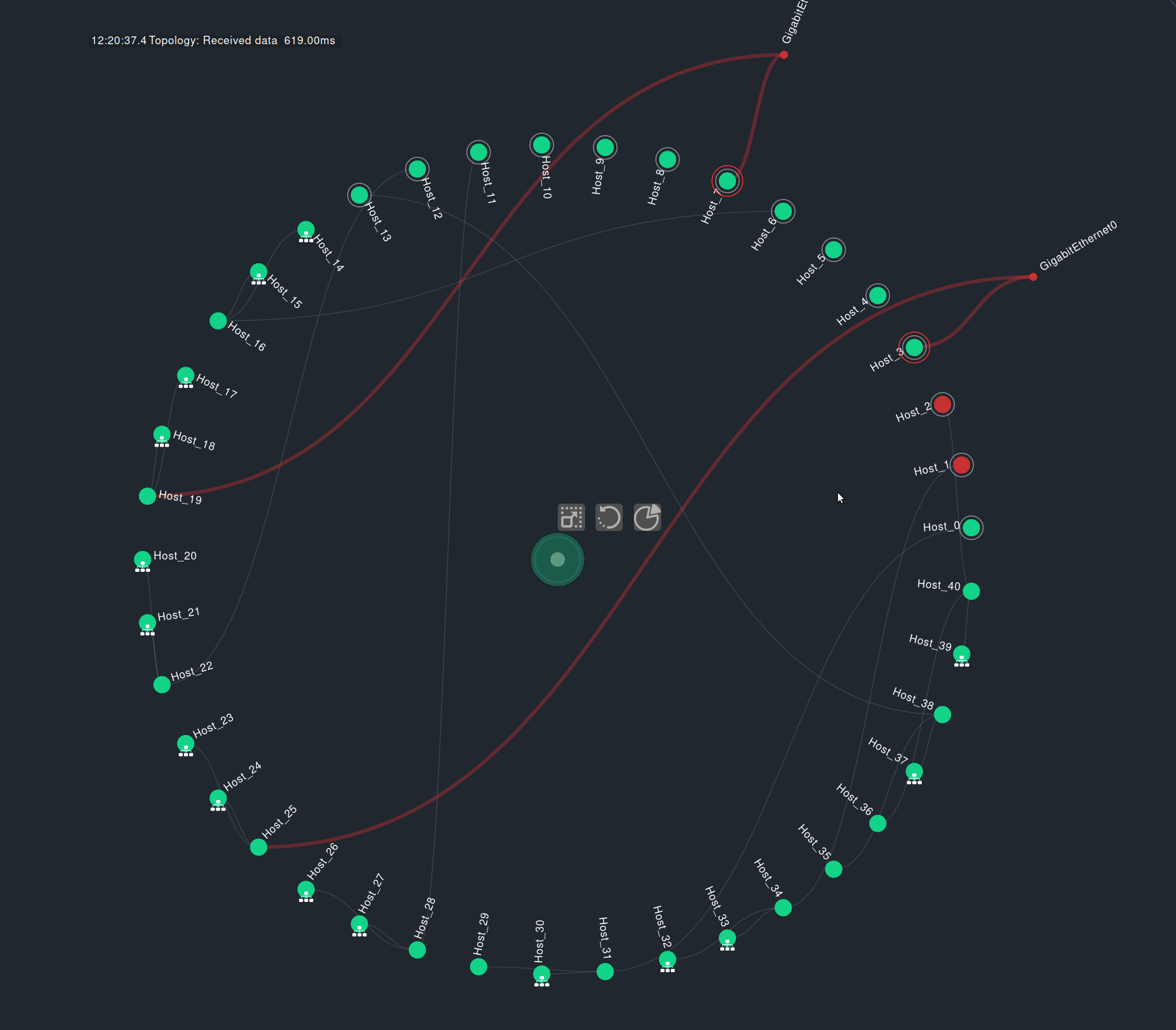
Choose between different representations. The radial layout is most of the time the best to get an overview
You can customize the view network_hover_service. The new painter “Network connection” is also included in this MKP
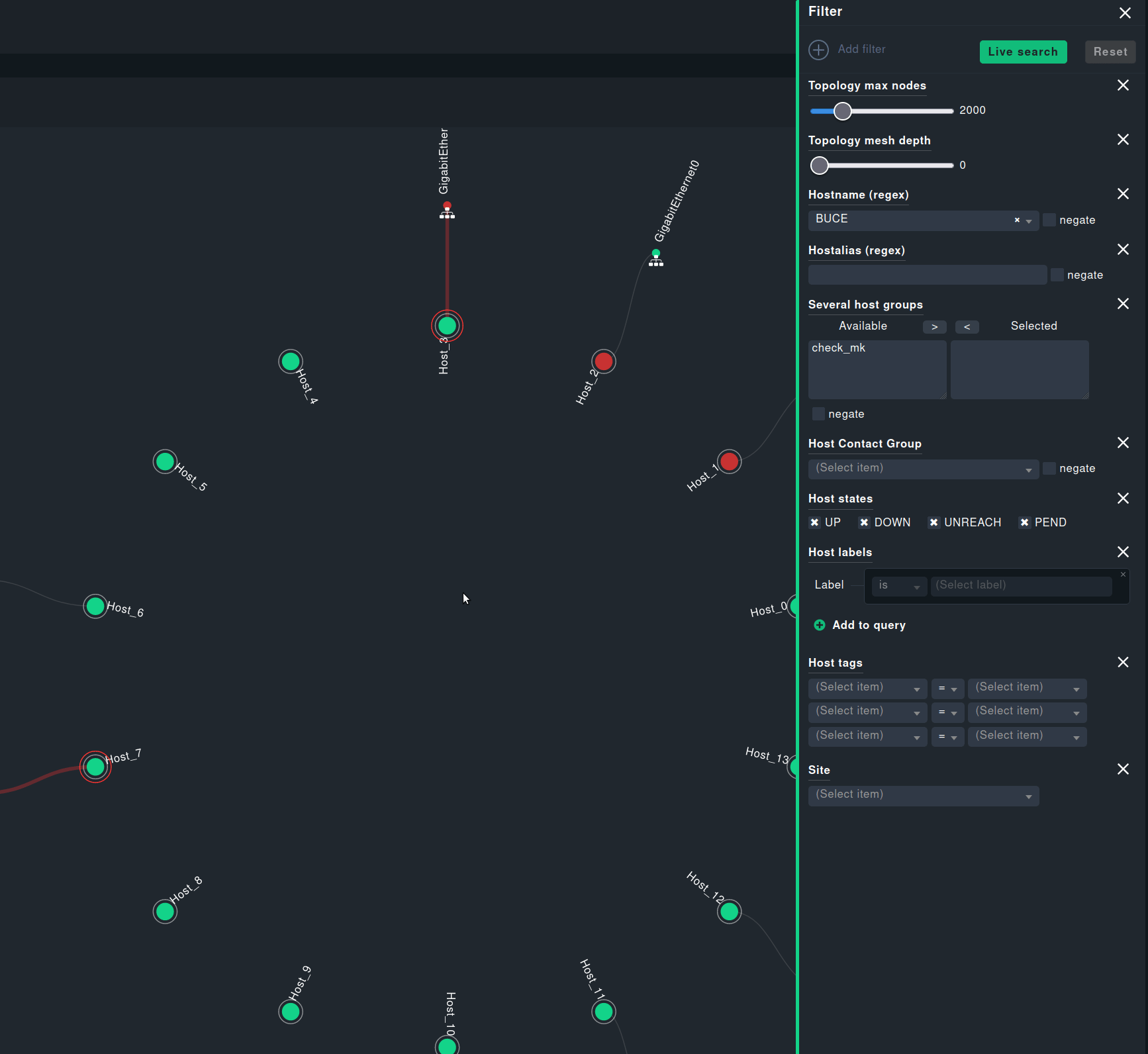
This MKP also adds a customized filter form which automatically updates the data, once settings get changed.
It is more or less a gimmick I’ve added to allow a more fluid way of working - so no “Apply filters” button.
Future planned developments
- Lots of UX redesigns
- Show hosts specified in the connection data file, but not present in the monitoring core
- Make network traffic between hosts visible, if we can somehow get that data
- Use the same visualization mechanism to display a different type of data. For example, analyze netstat data to get an overview of client/server connections
Note:
There may be some visual glitches in the current implementation. Most of them disappear once you zoom in/out.
I will fix the problem later this year when this feature is included in the official version 2.3.
Checkmk Exchange Download: Checkmk Exchange

